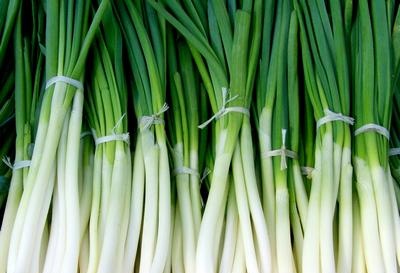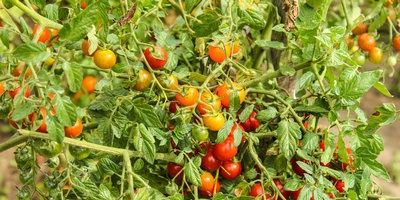|
 They say that there is no simpler vegetable in the world than a radish. In general, this is true, because radish succeeds on every land, grows in the most empty northern gardens and ripens earlier than anyone else. They say that there is no simpler vegetable in the world than a radish. In general, this is true, because radish succeeds on every land, grows in the most empty northern gardens and ripens earlier than anyone else.
Sometimes three weeks after sowing. In twenty days! The gardeners even have a saying: "Everyone starts with a radish." This means: if you don't know how to grow anything, then you will still succeed in radishes.
However, back in the 70s, some of the gardeners spoke in a completely opposite way: "Radish is a tricky thing even for connoisseurs!"
“Take cleaning, for example,” they said. “Let the car go and difficulties immediately arise. Radish is small, and it is a great art to separate it from the clods. Make the gap in the sieves wider - radishes will spill out, and if narrower - there will be earth!
Of course, they knew about the hassle with radishes before. Our glorious gardener Efim Grachev at one time devoted his best years to radish. Remember what is the main drawback of this vegetable? Well, of course, flabbiness. Radishes are good when they are fresh from the garden. He's already flabby tomorrow. And a little overripe - it becomes just like cotton wool. And often empty inside.
Connoisseurs were at a loss. The closest to the truth, it seems, came Professor M. Rytov. He noticed this. If a greenhouse radish grows next to a summer radish, then hybrids arise. The root crop of the cross turns out to be larger, and most importantly, it does not flabbake longer. Rytov decided that Grachev, an observant person, could also notice the hybrids and choose the best specimens from them. He decided that the Germans with their Würzburg variety also followed this path.
However, one detail is alarming here. In Würzburg, the color of the root crop is pink-red, but if you look closely, you can see a certain purple hue. And some have such a bright purple, as if they were dipped in ink. Violet is not characteristic of European varieties, but it is very often found in the radishes of the East. Perhaps one of Würzburg's parents came from precisely that place? Maybe Grachev went the same way?
More than half a century has passed since then. And the radish is still flabby ... There is no reason to blame modern gardeners, because the ill-fated vegetable has put a lot of difficulties in their way.
Grachev decided to do the impossible. Make the radish sagging. A Moscow vegetable grower worked for thirteen years. The result surprised even seasoned gardeners. Ten varieties of non-flabby radish. True, these hybrids did not have the piquant pungency of the best European varieties, and were not very attractive in appearance - variegated or striped, but they could be stored for a long time without changing the taste. And they were larger in size. Grachev, probably, would have corrected all the shortcomings, but, unfortunately, he did not have time to do all this during his lifetime.
 And now we only have to guess: how did he manage to solve such a daunting task, who were the parents of Grachev's masterpieces? And now we only have to guess: how did he manage to solve such a daunting task, who were the parents of Grachev's masterpieces?
Half a century has passed. The world's first non-flabby varieties have been lost. They were forgotten. They forgot so firmly that the Germans subsequently set about breeding non-flabby radishes anew, as if they did not exist in the world. They got the Wurzburg radish, which was distinguished by the same necessary qualities as the Grachev unique ones. It could be stored for a long time without losing its juiciness and taste. The appearance of the Würzburg vegetable was surrounded by the same mystery as the Grachev varieties.
For example, with weeds. It is risky to use herbicides on radishes. Hand polishing is expensive.
Another difficulty is the growth rate. You've already noticed that radishes grow quickly. Day 21 - and you're done! But gardeners want it even faster. They noticed that varieties with fewer leaves produce the fastest. They even bred the Indoor variety, which has only two leaves.The variety has a little more leaves. There are no similar ones. And yet, it seems that no one has yet succeeded in reducing the ripening of a spring vegetable to two weeks. 20 days is still an insurmountable barrier.
Finally, another difficulty is the summer radish. In the spring - please! Even in autumn - in October - there are pink bunches in the markets in Moscow. But in the summer? In July? No! And not because in the midst of the heat, there are many other, more tempting vegetables. And for a completely different reason. Because in summer the day is too long for our vegetable. Radish is a long day plant. And then he immediately drives out the flower stem. And the root crop does not have time to round out. If the summer day was as short as in the tropics, the capricious creature would have produced huge root crops. This is exactly what Professor V. Edelstein thought. And he tried to create a tropical day near Moscow. I just took it and cut it artificially. Radish reacted immediately to this. No stem appeared. But the root crop increased and became the size of an orange. Up to two hundred grams a piece!
I foresee the question: can radishes grow in the tropics? In the tropics, the day is short, and this is what our vegetable needs. It is impossible to answer unequivocally. It cannot grow in hot lowlands. Although the day is good for radishes, it's too warm. The best temperature for this northern creature is plus fifteen degrees Celsius. In extreme cases - plus eighteen, but not more. There is much more in the tropics.
But if you plant it high in the mountains, then, perhaps, the radish will grow. But our early ripening vegetable climbs very far to the north. In Iceland, where almost all vegetables are saved under glass in greenhouses, radishes are left outside.
In Kolyma, radish has long become the most common crop.
A. Smirnov. Tops and roots
|
 They say that there is no simpler vegetable in the world than a radish. In general, this is true, because radish succeeds on every land, grows in the most empty northern gardens and ripens earlier than anyone else.
They say that there is no simpler vegetable in the world than a radish. In general, this is true, because radish succeeds on every land, grows in the most empty northern gardens and ripens earlier than anyone else. And now we only have to guess: how did he manage to solve such a daunting task, who were the parents of Grachev's masterpieces?
And now we only have to guess: how did he manage to solve such a daunting task, who were the parents of Grachev's masterpieces?






























